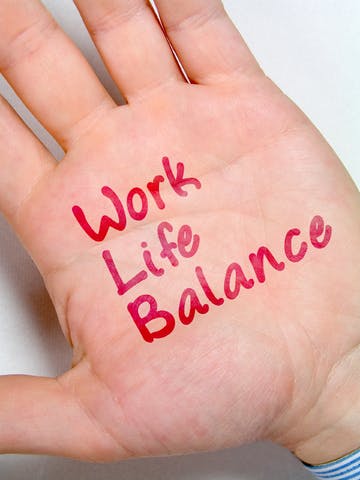Have you read Sheryl Sandberg‘s new book Lean In?
If not, you’ve probably heard about it. It’s receiving rave reviews and generating a lot of conversation. Oprah Winfrey referred to the book as “honest and brave … The new manifesto for women in the workplace.”
The book — and the author — have created quite a stir. In a PBS interview, Sandberg stated “there’s no such thing as work-life balance. There’s work, there’s life, and there’s no balance.” The book encourages women to challenge assumptions about themselves and the workplace, and urges us to give up the myth of “having it all.”
Lives of “weisure” and work week creep
In her review of the book, Carey Goldberg argues that Sandberg has missed the mark:
Our greatest obstacle is not any girly self-doubt. It is a rigid workplace culture that won’t let us ratchet down. It is employers who do not offer flexible alternatives that drive parents out, by offering only a binary choice between full-time-plus or the highway.”
Could the problem really be as simple as workplace (in)flexibility? It might be. But flexibility isn’t a “women’s issue” — it’s a “worker’s issue.”
All of us, irrespective of gender, suffer from work week creep. Our work weeks are expanding because we’re performing work-related activities during non-work time. We live lives of weisure, a term coined by sociologist Dalton Conley.
Conley notes that “activities and social spaces are becoming more work-play ambiguous” and it’s becoming increasingly difficult to segregate the work aspects from the non-work aspects of our lives. The source of this ambiguity? Technology.
Another reason for flexible workplaces
It should come as no surprise then that Sandberg, the COO of Facebook, doesn’t think that work-life balance exists. In an always-on, always-connected world, the boundary between work and life is significantly blurred, if not altogether erased.
Our workdays have also been reshaped by the kinds of work we’re doing. The rise of the “creative class” means we’re working differently, manufacturing ideas rather than widgets. It may be the case that a weisure lifestyle is the best fit for this creative class.
I’m not sure if work-life balance is possible, at least in the conventional sense. But I do think that if it is, flexible workplaces will help us achieve it.
It’s up to each individual to find their own balance, and workplaces that embrace a variety of options for these balancing acts will be the ones that lead us into the 21st century.
This was originally published at the Compensation Café blog, where you can find a daily dose of caffeinated conversation on everything compensation.
